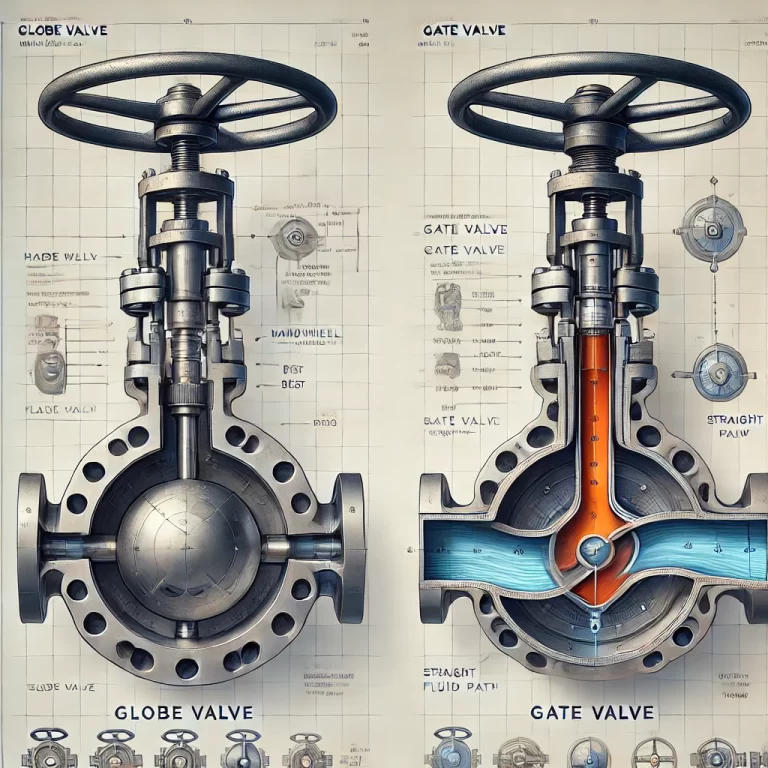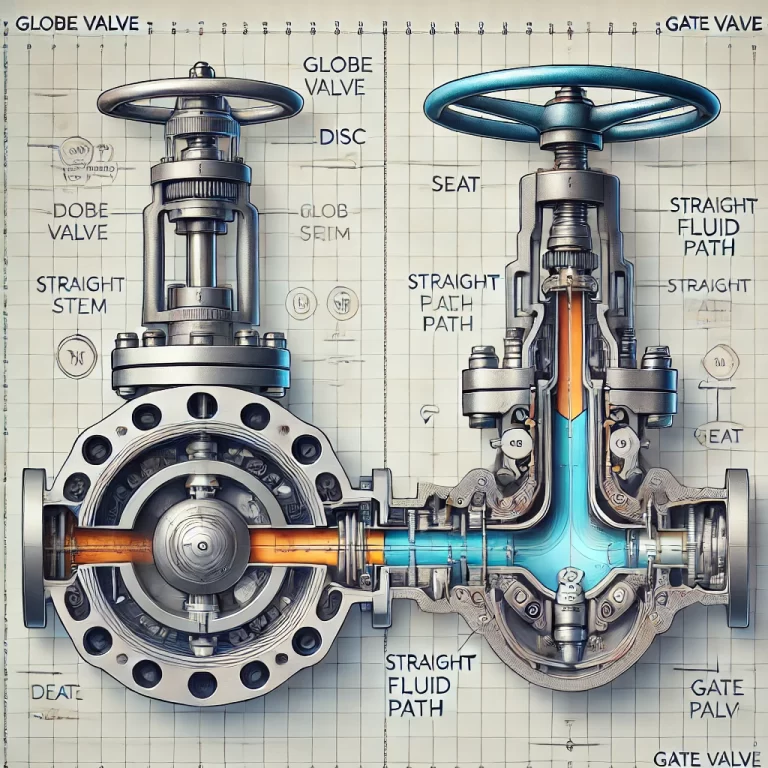Globe valves and gate valves are two of the most common valve types used in industrial applications. While they may appear similar in some contexts, their internal structures, functions, and application scenarios are significantly different. This article outlines their differences in detail from multiple dimensions to help engineers and users make informed choices.
1. Operating Principle
Globe Valve:
The handwheel and valve stem move together. As the stem moves down, the valve disc presses against the seat, closing the valve. When the stem rises, the disc lifts off the seat, opening the valve. This allows for good flow control.Gate Valve:
The handwheel rotates the valve stem, which moves the gate (wedge) up and down. When the gate is fully raised above the seat, the valve is fully open. When lowered completely, the valve is fully closed. It is not suitable for throttling purposes.
2. Flow Regulation and Opening/Closing Behavior
Globe Valve:
Designed for throttling; the valve can be partially opened to regulate flow. The opening/closing stroke is relatively short. Most globe valves feature an outside screw and yoke (OS&Y), making operation and visual position monitoring easier.Gate Valve:
Designed for full open/full close operations only. The stroke is longer than that of globe valves. Gate valves can be rising stem (OS&Y) or non-rising stem, depending on whether the stem moves externally.

3. Flow Resistance
Globe Valve:
The fluid path is S-shaped, causing higher flow resistance and pressure drop. More force is required to open/close the valve due to greater flow resistance.Gate Valve:
Offers minimal flow resistance when fully open. The fluid path is straight-through, which reduces turbulence and energy loss.
4. Installation Direction and Flow Orientation
Globe Valve:
Has a designated inlet and outlet. It typically follows the principle of low inlet, high outlet to ensure tight sealing and prevent erosion.Gate Valve:
Bi-directional; can be installed in either direction with no specific inlet/outlet requirement.
5. Structure and Sealing Performance
Globe Valve:
Simpler structure and easier to manufacture and maintain. However, sealing surfaces may be subject to wear due to fluid impact. The flat-seated design is less resistant to particulate damage.Gate Valve:
More complex structure with two sealing surfaces. When fully open or closed, it offers tight sealing (often wedge-type or parallel gates). However, sealing faces are vulnerable to particle contamination and wear, which makes them less suitable for frequent flow regulation.
6. Application Scenarios
Globe Valve:
Suitable for small-diameter pipelines where flow regulation is needed—common in chemical, petroleum, and process industries. Ideal for systems requiring frequent operation but not extreme sealing performance.Gate Valve:
Preferred for large-diameter pipelines and applications requiring rapid isolation—such as municipal water supply, wastewater, and steam systems. The low flow resistance helps preserve energy in steam pipelines.

7. Pros and Cons Summary
| Aspect | Globe Valve | Gate Valve |
|---|---|---|
| Flow Control | Yes (throttling possible) | No |
| Flow Resistance | High | Low |
| Stroke Length | Short | Long |
| Structure | Simple | Complex |
| Maintenance | Easy | Moderate |
| Sealing | Moderate | Strong (when clean) |
| Best Use Case | Flow regulation in small pipelines | Isolation in large pipelines |
8. Selection Guidelines
When selecting between a globe valve and a gate valve, consider the following:
Choose a globe valve when:
Flow regulation is required.
The valve will be operated frequently.
Space for operation is limited.
Choose a gate valve when:
Full open/full close operation is sufficient.
Minimal flow resistance is critical.
Large pipeline sizes are involved.
